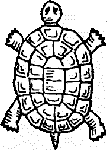As in four-legged creatures these categories also have standard
postures associated with specific creatures and commonly seen animals as
well. For instance the dolphin and the
lucy (the traditional name for a pike) are usually shown upright or swimming. While reptiles are not common in heraldry,
serpents are and frequently they are shown tied in knots or twisted around a
staff. In the case of insects, bees are
very popular as a symbol of industry and are usually seen from the top with their
wings spread.
Below you will find the postures and more detailed explanations
for them under each fauna category. You
will notice that in some cases there are specific words for specific creatures
defining their posture. These terms only
define them and no other creature in their category. Just like “pride” is used to define a peacock
showing its feathers from the avian category.
Water Creatures
If it swims in fresh or sea water you may find it in
heraldry. While the dolphin is one of
the more common animals you will see depicted there are many others as
well. Whales and various other types of fish
are popular. Crustaceans such as lobsters,
crabs, and escallops can be seen on arms and you may also find a kraken (squid)
or an octopus.
Posture
|
Definition
|
Example
|
Embowed
|
Body curving inward on itself
|
|
Embowed-counterembowed
|
An “S” shaped curve to the body mainly seen in dolphins
|
|
Haurient
|
Body in pale, the head to the top or chief
|
|
Naiant
|
Body in fess, the head to the right or dexter of the
arms
|
|
Uriant
|
Body in pale, the head to the bottom or base
|
|
Posture
|
Definition
|
Example
|
Erect
|
An upright or sitting position
|
|
Involved, Voluted, Encircled
|
Coiled to form a circle
|
|
Nowed
|
Tied in a knot
|
Bee volant
Turtle tergiant
Emmet, or ant, tergiant
*Heraldic Clipart from “Free Heraldry Clipart Site”











No comments:
Post a Comment